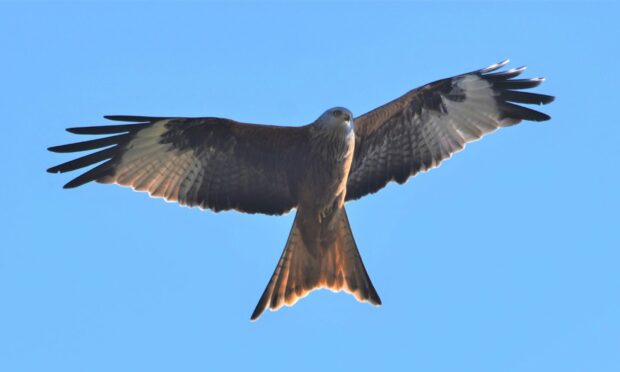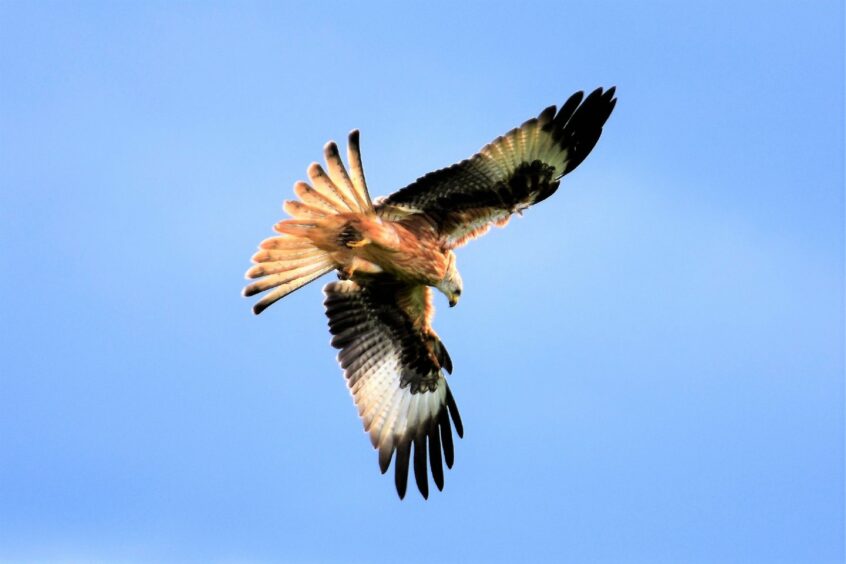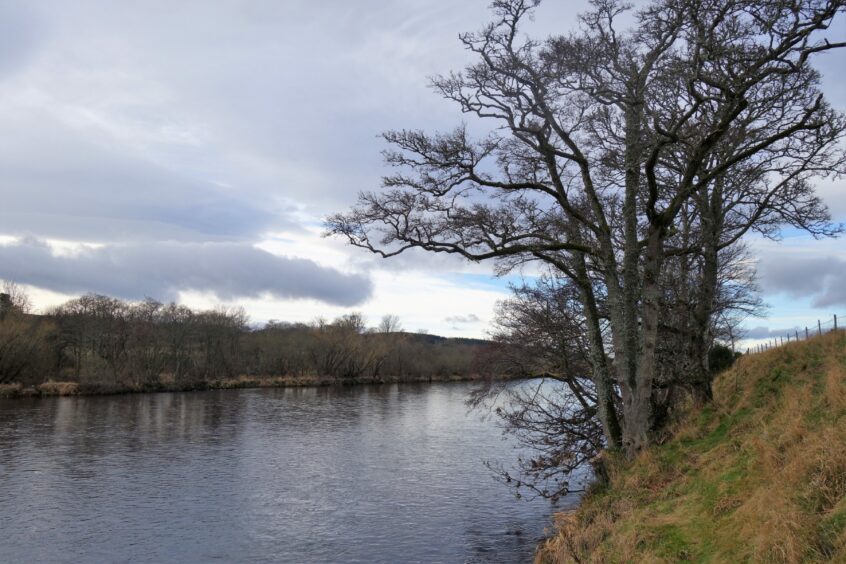A pair of red kites soared high above me, their forked tails twisting constantly as they sought purpose and direction in the gusty wind above the River Dee near Banchory.
I always pinch myself every time I spot a kite to ensure it is not a hallucination of the mind, for when I was a child only a handful of pairs existed in the wilds of Wales.
However, thanks to reintroduction schemes, kites are now widespread in Scotland, including Aberdeenshire and the area around the Black Isle.
It is an inspiring example of how nature can thrive if given half-a-chance, and a reminder of our responsibilities to encourage and foster a healthy and diverse environment.
I watched the kites for a while longer until they slipped from view behind a stand of pines on the far bank of the Dee.
Royal Deeside
I was at Crathes, just to the east of Banchory, and I wandered down to the river.
A group of mallards dabbled in a shallow margin on the far side and a resting heron perched on a low bough.
The coppery water of the Dee flowed true and strong, and a dipper whirred upriver on fast-beating wings.
There weren’t many trees on my side of the bank, which was a shame, for riverside trees bring many benefits, including insects and other invertebrates dripping-off twigs and into the water, providing food for trout and other fish. However, the bank wasn’t totally treeless, and I ventured up to a lone alder and ran my hand down its rough bark.
The catkins on this alder were pronounced, although they lacked the vibrancy of those found on hazels.
However, alders bring colour in a more extraordinary way, for when a tree cracks and tumbles, the inner wood displays a stunning bright reddish-orange hue.
At one time this striking feature of new-cut wood was thought to symbolise bleeding and as such the tree was shrouded in fearful superstition.
Over time, this deep colour fades to a paler brown, making the wood much sought after by furniture makers who, quick on the marketing uptake, brand it as ‘Scots mahogany’.
The alder is our quintessential riverside tree and copes well in such poor and waterlogged conditions, and through symbiotic relationship with a type of root bacterium has the capability to absorb nitrogen from the air, which in turn enhances the surrounding soil fertility.
It is a pioneering tree that colonises areas of boggy ground, which over time create the right conditions for the succession of other types of vegetation.
Alders help to prevent erosion of riverbanks, their spreading and probing roots binding the soil together, and, like the hazel, it is a tree that should be revered as one of our shining stars of nature.
In winter, feeding flocks of siskins and redpolls dance along the riverside alder tops in search of their small seed cones.
These little finches twitter in joyful harmony, and no matter how ferocious the weather, the alders are always productive and willingly give up their precious bounty.













